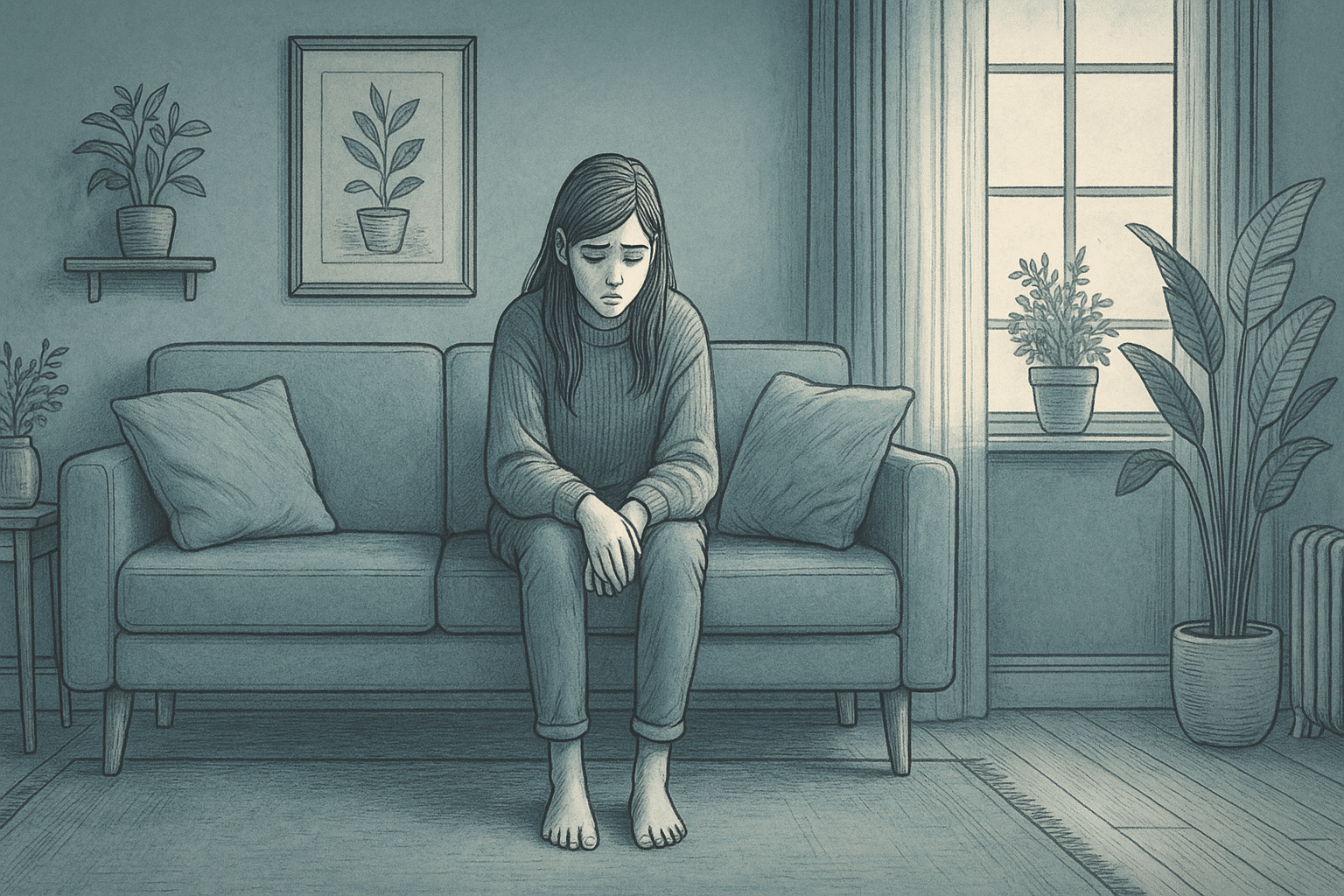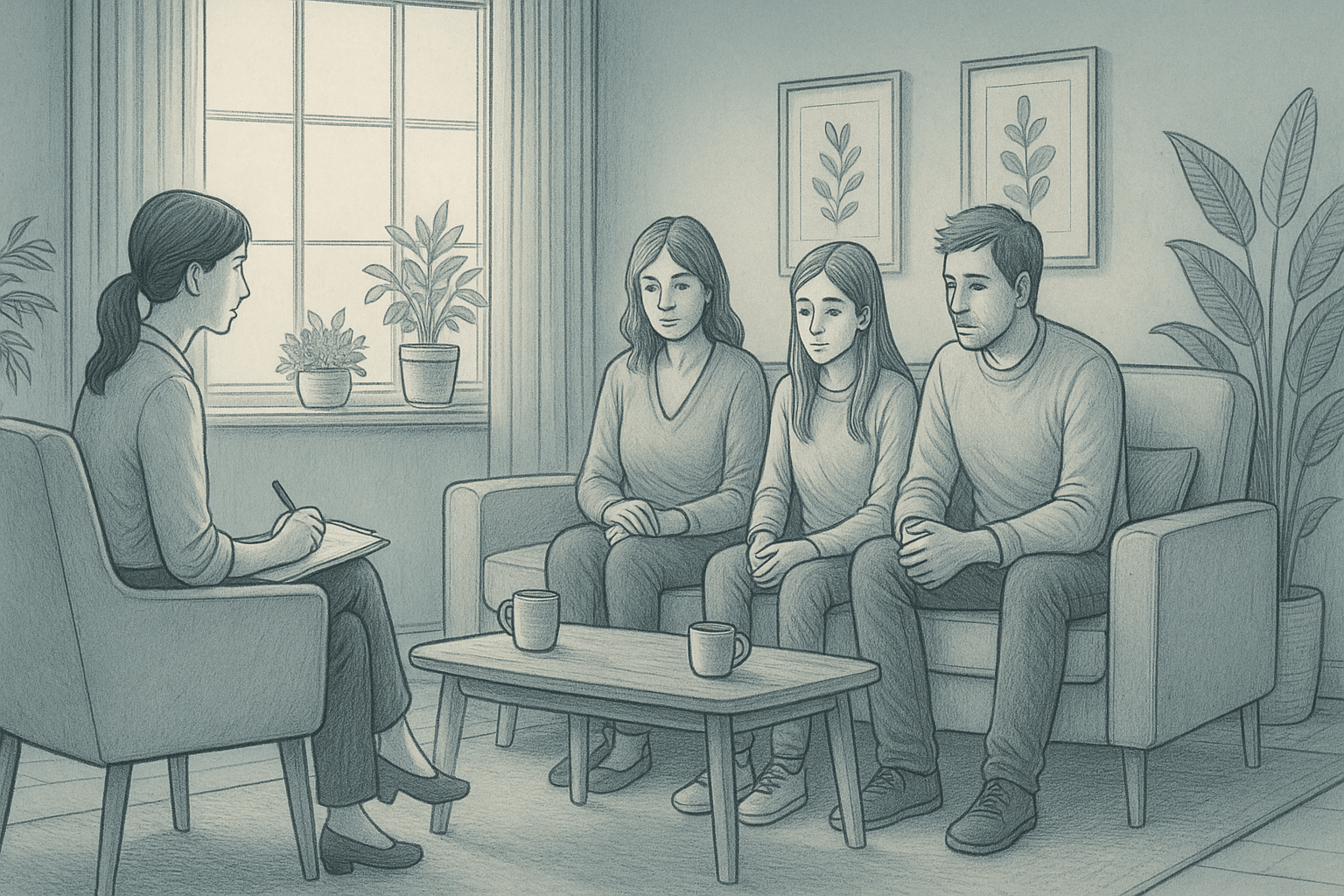Key Takeaways
- Mood disorders in teens include major depression, persistent depressive disorder, bipolar disorder, disruptive mood dysregulation, and obsessive-compulsive disorder.
- Symptoms can range from prolonged sadness and irritability to extreme mood swings and difficulty concentrating.
- Genetic factors, environmental stressors, and hormonal changes often contribute to the onset of these disorders.
- Early diagnosis and treatment, which may include therapy and medication, can help manage symptoms and improve quality of life.
- Mission Prep offers comprehensive treatment for adolescents with mood disorders, providing structured residential care, 24/7 professional support, and personalized treatment plans that address each teen’s unique needs in a safe, welcoming environment.
A Look at Mood Disorders
Mood disorders cover a variety of mental health issues that affect a teen’s emotional state. These disorders can lead to prolonged periods of sadness, irritability, or extreme mood fluctuations, impacting daily life and relationships.
Impact and Prevalence
Mood disorders are relatively common among adolescents, with studies indicating that up to 20% of teens may experience a mood disorder at some point. The impact of these disorders extends beyond the individual, affecting families, schools, and communities. Recognizing and understanding these disorders is the first step in providing the necessary support and treatment.
Mission Prep Healthcare specializes in mental health treatment for teens aged 12-17, offering residential and outpatient programs for anxiety, depression, trauma, and mood disorders. Our therapies include CBT, DBT, EMDR, and TMS, tailored to each adolescent’s needs.
With a structured, supportive environment, we integrate academic support and family involvement to promote lasting recovery. Our goal is to help teens build resilience and regain confidence in their future.
5 Common Mood Disorders in Teens
Major Depression
Major depression, also known as major depressive disorder, is characterized by persistent feelings of sadness and hopelessness. This disorder can severely impact a teen’s ability to function in everyday life.
Symptoms of Depression
- Prolonged sadness or irritability
- Loss of interest in hobbies or activities
- Changes in appetite or weight
- Difficulty sleeping or sleeping too much
- Fatigue or lack of energy
- Feelings of worthlessness or guilt
- Difficulty concentrating
- Thoughts of death or suicide
Potential Causes
The causes of major depression in teens are multifaceted, often involving a combination of genetic, biological, environmental, and psychological factors. A family history of depression can increase the risk, as can stressful life events such as the loss of a loved one or parental divorce. Hormonal changes during adolescence can also contribute to depression.
In some cases, depression may arise from a chemical imbalance in the brain, where neurotransmitters that regulate mood are not functioning correctly.

Depression is not a sign of weakness or something that can be overcome with sheer willpower—professional treatment is often necessary to manage symptoms effectively.
Persistent Depressive Disorder
Persistent depressive disorder, also known as dysthymia, is a chronic form of depression that lasts for at least 2 years. While the symptoms may not be as severe as those of major depression, they are more prolonged and can significantly change a teen’s life.
Symptoms of Dysthymia
- Chronic feelings of sadness or low mood
- Low self-esteem
- Feelings of hopelessness
- Difficulty concentrating or making decisions
- Fatigue or low energy
- Changes in appetite
- Sleep disturbances
These symptoms can make it challenging for teens to maintain relationships, perform well in school, and enjoy life.
Duration and Diagnosis
Diagnosis of persistent depressive disorder requires that symptoms be present for at least two years, with no more than two months without symptoms. This long duration can make it difficult to recognize, as the symptoms may become part of the individual’s everyday experience. A mental health professional can provide a proper diagnosis and recommend treatment options to help manage the disorder.
Bipolar Disorder
Bipolar disorder is characterized by extreme mood swings that include emotional highs (mania or hypomania) and lows (depression). These mood changes can be sudden and affect a teen’s behavior, energy levels, and ability to function.
Manic vs. Depressive Phases
During a manic phase, a teen may experience:
- Increased energy or activity levels
- Racing thoughts
- Decreased need for sleep
- Excessive talking
- Impulsive or risky behavior
- Inflated self-esteem or grandiosity
By contrast, the depressive phase includes symptoms similar to major depression, such as sadness, fatigue, and loss of interest in activities. The shifts between these phases can be rapid or may occur over weeks or months.
Diagnosis in Adolescents
Diagnosing bipolar disorder in adolescents can be challenging due to the natural emotional fluctuations that occur during teenage years. However, when mood swings become extreme and negatively affect your daily life, seek professional help. A mental health professional will assess symptoms, duration, and the impact on daily functioning to provide a diagnosis. In some cases, mood tracking over time may be necessary to differentiate between typical adolescent behavior and bipolar disorder.
Disruptive Mood Dysregulation
Disruptive Mood Dysregulation Disorder (DMDD) is a condition characterized by severe irritability, anger, and frequent temper outbursts. It goes beyond the occasional moodiness seen in teens and can significantly disrupt a young person’s life.
Signs of Irritability
- Persistent angry or irritable mood nearly every day
- Disproportionate emotional reactions to minor frustrations
- Chronic negative mood between temper outbursts
- Irritability that is observable by others (parents, teachers, peers)
- Difficulty transitioning between activities or handling changes in routine
- Low frustration tolerance in various settings and situations
- A constant state of emotional turmoil that affects daily functioning
The irritability in DMDD is more severe than what might be expected for a teen’s developmental level. It is not just typical teenage moodiness but a constant state of emotional turmoil.
Behavioral Control Issues

Behavioral control issues in DMDD manifest as frequent temper outbursts that are out of proportion to the situation.
Unlike other mood disorders, DMDD is marked by behavioral control issues, such as frequent, intense temper outbursts. These outbursts can include verbal rages or physical aggression and occur, on average, three or more times a week. The unpredictability of these episodes can create a tense environment for the teen and those around them.
Obsessive Compulsive Disorder
Obsessive-Compulsive Disorder (OCD) is a thought disorder characterized by unwanted, persistent thoughts (obsessions) and repetitive behaviors or mental acts (compulsions) that an individual feels driven to perform. These obsessions and compulsions can significantly interfere with daily activities and cause distress.
Common Obsessions in Teen OCD
- Excessive fear of contamination or germs
- Unwanted thoughts about harm coming to themselves or loved ones
- Need for symmetry, exactness, or perfect order
- Intrusive sexual or religious thoughts that cause anxiety
- Fear of losing control or engaging in inappropriate behaviors
- Excessive concern with right/wrong or morality
- Fear of discarding items that might be needed later
- Superstitious beliefs about numbers or colors
Impact on Daily Life
Many adolescents with OCD find themselves dedicating considerable time, often several hours each day, to performing various rituals that temporarily alleviate their anxiety. This often leads to avoidance of social situations that might trigger their obsessions, creating a pattern of isolation and missed opportunities for normal teenage development.
Seek early intervention for OCD. With appropriate treatment, you can learn to manage your symptoms effectively and prevent the disorder from disrupting your development and quality of life.
Risk Factors for Developing Mood Disorders in Teens
Genetic Influences
Teens with a family history of mood disorders, such as depression or bipolar disorder, are at a higher risk of developing a mood disorder. Studies suggest that specific genes may contribute to the vulnerability to these disorders, although they do not determine their occurrence.
Environmental Triggers
Environmental factors, including stressful life events, trauma, or chronic stress, can trigger or exacerbate mental health disorders in teens. For example, experiences such as parental divorce, bullying, or the loss of a loved one can negatively impact a teen’s emotional well-being.
Also, the social and academic pressures that teens face can contribute to the development of mood disorders. A supportive environment that includes open communication and emotional support can mitigate some of these risks.
Treatment Options

Treating mood disorders in teens often involves a combination of therapy, medication, and family support.
Medication
Medication, such as antidepressants or mood stabilizers, can help regulate brain chemistry and alleviate symptoms of mood disorders in teens. Work closely with a healthcare provider to determine the most appropriate treatment plan for each individual.
Therapy
Therapy, particularly Cognitive Behavioral Therapy (CBT), is highly effective in addressing mood disorders. CBT helps you recognize and alter negative thought patterns and behaviors. It equips you with coping strategies to manage your symptoms and improve your emotional resilience. Engaging in therapy provides a safe space to express your feelings and work through challenges with a professional.
Family Support Role
Families can create a supportive environment by maintaining open communication, showing empathy, and being involved in the treatment process. This involvement might include attending family therapy sessions or learning about the disorder to better understand the teen’s experiences.
Also, families can encourage healthy habits, such as regular exercise, balanced nutrition, and adequate sleep, which are vital for mental health.
Why Choose Mission Prep for Teen Mood Disorder Treatment

Mission Prep Healthcare provides teens with comprehensive mental health treatment.
At Mission Prep, we recognize that conditions like depression, bipolar disorder, and disruptive mood dysregulation disorder can significantly impact adolescent development and family dynamics. Our approach goes beyond simply treating symptoms—we provide comprehensive care that addresses the whole person.
Mission Prep provides a structured, supportive environment in California and Virginia where teens can focus entirely on healing while developing practical skills to manage their symptoms long-term. Our expert team of clinicians utilizes evidence-based therapies, including CBT, DBT, and Internal Family Systems, customized to each teen’s unique needs. We believe that with proper treatment, teens with mood disorders can learn to thrive rather than just survive.
If you are struggling with a mood disorder, don’t wait—contact Mission Prep today to learn how our proven treatment approach can help your family find hope and healing.
Frequently Asked Questions (FAQ)
How common are mood disorders in teens?
Mood disorders are relatively common in teens, with studies suggesting that up to 20% may experience a mood disorder by the time they reach adulthood. These disorders can vary in severity and duration, impacting a teen’s emotional and social development.
Can mood disorders in teens be cured?
While mood disorders may not have a definitive cure, they can be effectively managed with appropriate treatment. Therapy, medication, and lifestyle changes can significantly reduce symptoms and improve a teen’s quality of life. Early intervention and consistent support are crucial for successful management.
What role does stress play in mood disorders?
Stress is a significant factor in the development and exacerbation of mood disorders. Environmental stressors, such as academic pressure, family conflicts, or traumatic events, can trigger or worsen symptoms. Managing stress through healthy coping mechanisms is vital in the treatment process.
Are mood disorders hereditary?
There is a genetic component to mood disorders, meaning they can run in families. Teens with a family history of mood disorders may have an increased risk. However, genetics is just one factor, and environmental influences also play a crucial role in the development of these disorders.
How long does treatment for mood disorders typically last?
Treatment duration varies depending on the specific disorder, its severity, and individual response to treatment. At Mission Prep, we emphasize that managing mood disorders requires a long-term commitment to care while still enabling teens to lead enriched, fulfilling lives.















